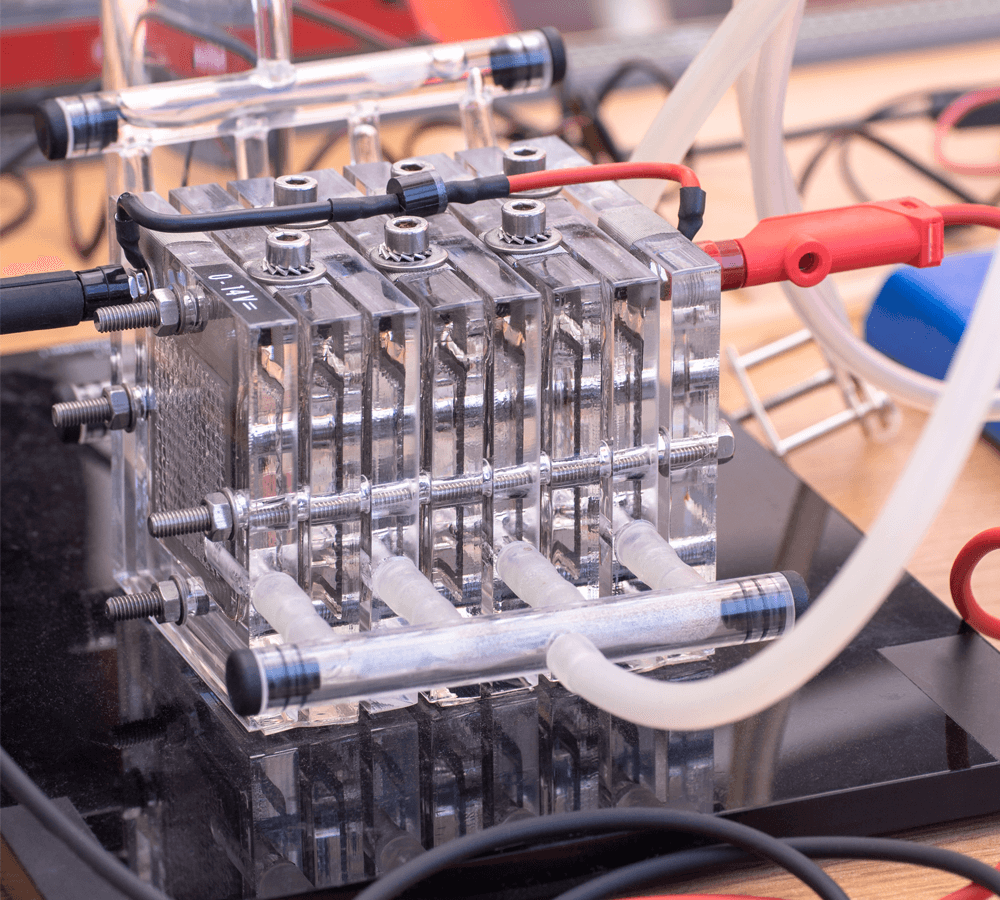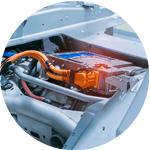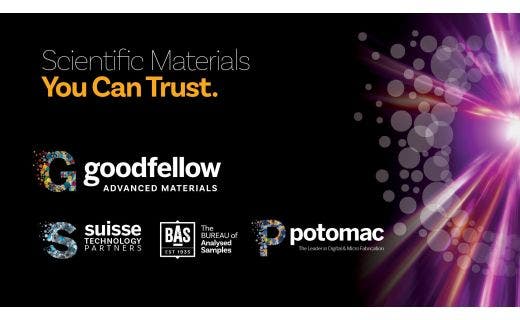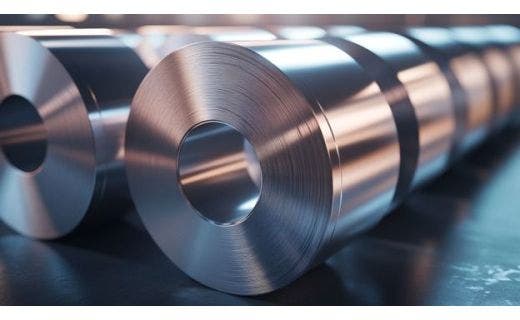Key Benefits of Fuel Cells Materials
Goodfellow's specialist materials gives you access to high performance materials, which provide:
- Electrode properties: High electrical conductivity for efficient electron flow, with catalytic activity to accelerate the electrochemical reaction all while improving durability
- Electrolytes, with a range of materials such as polymer and solid state for flexibility or stability and membranes for proton conductivity and gas barrier properties
Thanks to our exacting range of materials, we can offer solutions that provide a range of benefits whether manufacturing fuel cells or developing new innovations:
- Better manufacturing thanks to specialist material or unusual combinations
- Lower costs by recommending better value options
- Improved sustainability
- Reduced chemical corrosion, pressure and longevity issues


75+
Years of facilitating scientific innovation
170K
Huge range of advanced materials
111
Countries served globally
ISO9001
Quality assured products


Helping You Push Boundaries of Fuel Cell Technology
We supply high-performance materials, and that doesn't mean just common materials for fuel cell manufacturing such as vanadium and zinc, but specialist ones too. For example:
- Zinc foam - Used as an anode to make novel zinc air fuel cells such as fuel cell powered vehicles and energy storage
- Nickel foam - A popular choice for hydrogen storage due to its porous structure. It creates a large surface area that is easy to bend and process, while also being corrosion resistant for an excellent working lifespan
Enabling You to Choose the Best Materials
We provide you with the building blocks to create and test new fuel cell concepts and optimize existing designs. Whether you’re working with batteries, fuel cell technology or hydrogen storage, we can help you choose the best materials for your energy storage needs. Example products include:
Electrode materials:
- Platinum (Pt)
- Nickel (Ni)
- Carbon-based materials (carbon nanotubes and graphene)
Electrolyte materials:
- Polymer electrolytes (e.g. Nafion®)
- Solid-state electrolytes (e.g. lithium-ion conductors)
Membranes:
- Nafion® membranes


Fuel Cell Products
- Flexible Graphite Carbon Foil (Light Tight) Grade: Flexible Graphite
Formula: C
Percentage Purity: 99.8%
Thickness: 0.35mm
Length 1: 50mm
Length 2: 50mm
CAS Number: 7440-44-0
UOM Code: 011-717-63
eachStarting at £132.39
In stockDiscounts applied for volume purchasesGrade: Flexible GraphiteFormula: CPercentage Purity: 99.8%Thickness: 0.35mmLength 1: 50mmLength 2: 50mmCAS Number: 7440-44-0UOM Code: 011-717-63 - Platinum Powder Formula: Pt
Percentage Purity: 99.95%
Maximum Particle Size: 45µm
Weight: 2g
CAS Number: 7440-06-4
UOM Code: 121-238-30
eachStarting at £289.40
In stockDiscounts applied for volume purchasesFormula: PtPercentage Purity: 99.95%Maximum Particle Size: 45µmWeight: 2gCAS Number: 7440-06-4UOM Code: 121-238-30 - Ruthenium Powder Formula: Ru
Percentage Purity: 99.9%
Maximum Particle Size: 850µm
Weight: 20g
CAS Number: 7440-18-8
UOM Code: 327-807-28
eachStarting at £317.57
In stockDiscounts applied for volume purchasesFormula: RuPercentage Purity: 99.9%Maximum Particle Size: 850µmWeight: 20gCAS Number: 7440-18-8UOM Code: 327-807-28 - Carbon Powder Formula: C
Percentage Purity: 99.996%
Mean Particle Size: 7.73 micron approx (-625 mesh)µm
Weight: 500g
CAS Number: 7440-44-0
UOM Code: 108-806-49
eachStarting at £256.81
In stockDiscounts applied for volume purchasesFormula: CPercentage Purity: 99.996%Mean Particle Size: 7.73 micron approx (-625 mesh)µmWeight: 500gCAS Number: 7440-44-0UOM Code: 108-806-49 - CamGraph® G1 Graphene Powder Grade: CamGraph® G1
Formula: C
Percentage Purity: 99.8%
Weight: 1g
Category: Green Production
Class: Nanomaterials
Bulk Density: 0.03g/cm³
Platelet Thickness: 1+/-0.7 nm (3 +/- 2 layers)
CAS Number: 1034343-98-0
UOM Code: 262-775-21
eachStarting at £131.46
In stockDiscounts applied for volume purchasesGrade: CamGraph® G1Formula: CPercentage Purity: 99.8%Weight: 1gCategory: Green ProductionClass: NanomaterialsBulk Density: 0.03g/cm³Platelet Thickness: 1+/-0.7 nm (3 +/- 2 layers)CAS Number: 1034343-98-0UOM Code: 262-775-21
Applications


Transportation
Fuel cells are ideal for public transport, heavy goods vehicles, and heavy-duty tractors. Due to the higher energy density, they allow for longer travelling distances before refueling compared to Li-ion batteries.
Fuel cell vehicles can also be refueled in just a few minutes, substantially lower than EV vehicles.


Remote Power
Fuel cells are highly portable allowing for deployment in remote locations where electricity supply can be difficult. They can also be installed in hospitals or other energy demanding areas, where electricity supply needs to be continuous.
Fuel cells can offer a compelling alternative to diesel generators offering decreased emissions along with increased reliability.


Space Technologies
Space travel has been powdered by fuel cells since 1965. Fuel cells combine both hydrogen and oxygen to produce electricity, but also water (H2O).
Spacecraft can be powered by the electricity, with the water used by the astronauts for their living needs such as drinking and washing.
Why Goodfellow?
- No minimum order
- Over 175,000 advanced materials
- Supply Chain Management:
- sourcing custom materials for your needs
- Dispatched globally within 48 hours
- Materials customization:
- Custom parts for prototyping | Full product modification | Micro-machining | Microfabrication | Rolling
- Free and fast delivery: Worldwide shipping and customs clearance, to your door. All orders are dispatched within 48 hours
- Commercial arrangements:
- Call off orders | Buffer stock | Fixed and contract pricing | Discounts for increased volumes
- We help you innovate into the future.


*Conditions apply
What's New
Recent posts



Be in the know
Sign Up for our latest materials insight, projects and offers.








